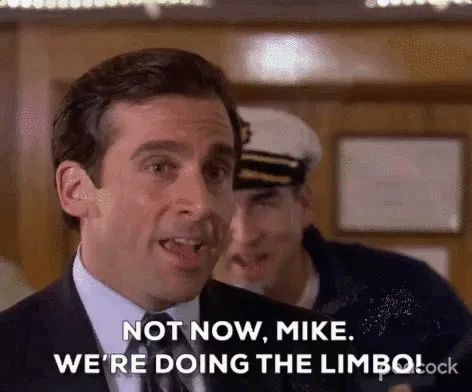There’s no return to normal with RTO. Here’s how organizations can get it right.
This future-of-work expert thinks individual teams should decide where employees work.

The Office/NBC via Giphy
• 4 min read
Three years ago, the pandemic shattered many corporate workplace norms that had been in place for decades. Now, as much of society settles into a post-pandemic equilibrium, one major facet of the pre-Covid landscape is still shrouded in uncertainty: the office.
Some companies have made attendance mandatory, whereas others have offered flexibility. At certain major employers, such as Apple, high-profile disputes have erupted between employees and leadership over return-to-office (RTO) schemes. The game of carrots and sticks, coupled with enduring uncertainty about what utility offices serve, has left the workforce in a permanent state of in-between, where companies don’t quite use offices like they used to, Dror Poleg, a future-of-work consultant, explained to HR Brew.
“There is no standard way of working. There’s just a lot of different companies and a lot of teams within companies adopting whatever works [for them],” he said.
While navigating the complexities of RTO limbo may seem daunting, Poleg advises organizations to avoid implementing blanket policies and instead conduct individual assessments on a team-by-team basis. With the increasing prominence of different flexible work styles, employers now have more options than ever. “The decision here is not to pick whether you’re going full in person or full remote, but really to pick what structure you are going to embrace,” he said.
Flexible growing pains. Poleg views the RTO saga as similar to the stages of grief, evolving from anger to depression for companies.
He characterized the anger phase as companies rescinding previous flexible work policies or issuing punishments for not complying with in-person work. The current depression phase involves a resigned acceptance that there won’t be a clear, one-size-fits-all solution to the RTO question. “Throughout this whole process, landlords and employers in particular have been looking for that silver bullet,” that will prompt a mass return to the cubicles of yore, he said.
Quick-to-read HR news & insights
From recruiting and retention to company culture and the latest in HR tech, HR Brew delivers up-to-date industry news and tips to help HR pros stay nimble in today’s fast-changing business environment.
No such silver bullet exists. Instead, a multitude of alternatives have grown in popularity, spurred in part by employees’ appetites for flexibility: A 36 -year high in job satisfaction in the US is linked to higher degrees of flexibility granted by employers, Joshua White, professor of finance at Vanderbilt University, previously explained to HR Brew. Employees with less flexibility are more likely to report feeling burned out, a Future Forum survey from earlier this year found.
“Three years ago, in an idealized version, companies knew that everyone has to show up to the office 9 to 5, and everything that deviates from that is, by definition, an exception. Now, there is no kind of standard way of working,” Poleg explained.
On the flip side, a company that waffles on flexibility risks damaging its reputation, he explained. “The worst place to be is in between those companies that first are not clear with their employees about what exactly they expect from them,” Poleg said. Without clarity on a working schedule, he said, “people don’t know what you stand for and whether they should come work for you.”
The future is flexible. Though there won’t be an aha moment where much of the corporate sector seamlessly fits back into the same, conventional paradigm, Poleg predicted that more companies would start to “pick a side.” That doesn’t mean choosing between the binary of in person or remote, it involves understanding how decisions should be made by individual teams, based on their needs.
“Allow departments [and] teams to make their own decisions about what works best for them,” he said.
Quick-to-read HR news & insights
From recruiting and retention to company culture and the latest in HR tech, HR Brew delivers up-to-date industry news and tips to help HR pros stay nimble in today’s fast-changing business environment.